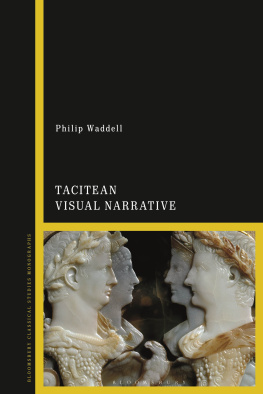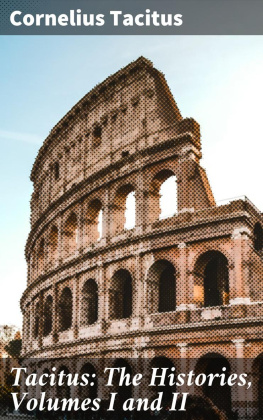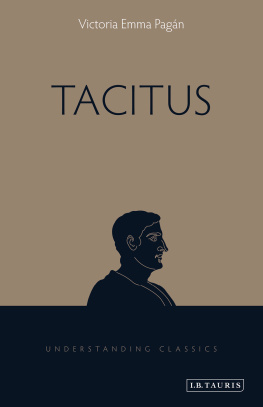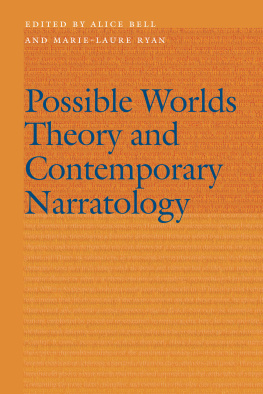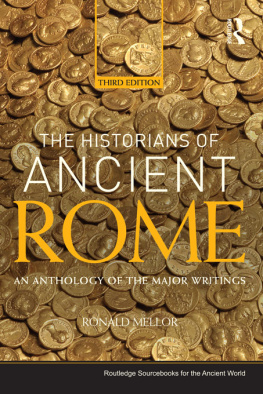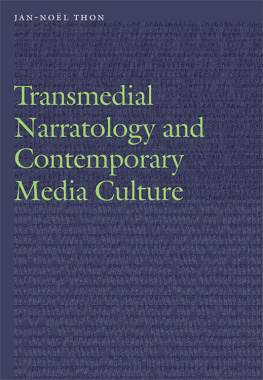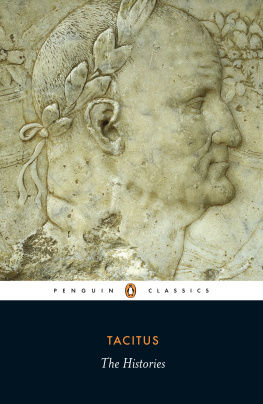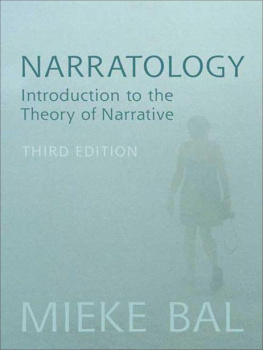
Tacitean Visual Narrative
Also available from Bloomsbury
Tacitus, Rhiannon Ash
Tacitus: Annals I, edited by Norma Miller
War as Spectacle, edited by Anastasia Bakogianni and Valerie M. Hope

UXORI MARITUS CARISSIMAE
Contents
As this monograph arose from my dissertation, I would like to begin by thanking my doctoral committee at the University of Missouri for their diligence and care not only in editing the dissertation, but also for providing help throughout all of its stages of completion: Ray Marks, David Schenker, Jim McGlew, Larry Okamura, and, most especially, Dennis Trout, without whose constant advice, support, and patience, this project would not have been possible. I am also grateful to the University of Geneva for their cordiality in allowing me access to their library during much of the research stage of this project, as well as to my department at the University of Arizona and the supportive faculty I am lucky to work among. I thank Monica Cyrino, of the University of New Mexico, who provided guidance and input throughout this process, and Anna Cooper and Barbara Selznick, from the University of Arizona School of Theater, Film, and Television, who were kind enough to assist me in navigating the vast corpus of film scholarship. I also thank Cynthia Damon for her kind permission to use her recent Penguin translation of the Annales. I am further grateful to the anonymous reviewers and the editors at Bloomsbury, Alice Wright, Lily Mac Mahon, and Georgina Leighton, for their patience, expertise, and assistance during the publication progress.
Narrative is the essence of history. Narrative records and explains what happenedimagination compels it to be seen and shared.
Ronald Syme
The dialogue between film and the world of classical antiquity has expanded rapidly since Jon Solomons The Ancient World in Cinema was first published in 1978. This rich area of research, once a niche outside the mainstream of Classics, has not only gained wider acceptance among classical scholars, but has in recent years deepened in both scope and breadth to embrace a wide range of viewpoints, and opened new avenues of discussion within the larger field of receptions studies. Comparisons and juxtapositions of such seemingly disparate and distanced narratives as classical text and film have great value not only in terms of sparking interest in the classical world and relating the foreign cultures of ancient Greece and Rome to our students and colleagues, but also in challenging classicists to better understand their own subject matter through analogy.
Scholarship on film and the classical world has tended in one of two major directions. The first investigates the reception, screening, and re-working of ancient stories or themes into modern adaptations. Solomon began the discussion along these lines, tracing the cinematic presentation of ancient stories. Solomons work, organized around broad genres, each assigned to a Greek muse, did much to turn the study of classics in filmeven including camp films such as Jason and the Argonauts (Chaffey, 1963)into texts worthy of scholarly attention. The study of filmic representations of the ancient world has gained ever-widening acceptance, propelled by the works of such scholars as Maria Wyke and Monica Cyrino.
The subject of ancient Rome, especially Roman history, on screen is the focus of Maria Wykes (1997) Projecting the Past: Ancient Rome, Cinema and History. In this work, Wyke continues Solomons genre-based framework of studying classics in film, focusing specifically on historical-based cinema. Wyke, however, uses film not only as a discussion of reception in and of itself, but also as a way of parsing notions of history and historiography. This work is thus a metapoetic analysis of ancient history, not only as it is received, but how it is studied and conceptualized. Projecting the Past thus opens the possibility that classical studies can benefit from engaging with film in terms of advancing textual and theoretical scholarship and understanding.
Monica Cyrino has contributed greatly, and in many regards, to the study of classical receptions in film. Her monograph Big Screen Rome (2005), continues Solomons work, focusing on films that present Rome and Romans as sources of spectacle. Cyrino examines nine films dealing with Rome in temporal order from Quo Vadis (LeRoy, 1951) to Gladiator (Scott, 2000). This work devotes a chapter to each film, and explores the intricacies of the films basis in classical texts, production issues, and the major themes at work. In addition, Cyrino has spread the interest in classical visual reception to the small screen, editing two volumes on HBOs Rome and co-editing a volume on STARZ Spartacus, as well as through the editing of the University of Edinburgh Presss Screening Antiquity, promoting a broader and more nuanced understanding of the complex interplay between classical antiquity and the screen.
The goal of this kind of receptions studies is two-fold: the examination of antiquity as most people, including students and non-specialists, may have encountered it; and the variety of ways that these representations are markers for the times and culture(s) within which they were created. Thus, the depiction of Roman legionaries in film has been employed to invoke Nazis or Soviets as opposed to a persecuted Judeo-Christian minority. These receptions of classical narratives are complicated by the fact that they were often based on nineteenth-century historical or biblical novels that were themselves receptions, instead of direct engagement with classical source material. The scholarship of classics receptions generally, and of filmic receptions more specifically, enables us to learn not only about antiquity, but also about ourselves through our retelling and refashioning of ancient themes and morals.
The second major direction of classical receptions studies in film examines how ancient stories, characters, and broader themes can play out in seemingly unrelated films. Suggestive of the growing interest in Classics for receptions studies in recent years, two journals have devoted entire issues to showcasing new scholarship along these lines. The first of these was Martin Winklers Classics and Cinema, comprising a full issue of Bucknell Review. In the last five years, two monographs have addressed different aspects of classical receptions in modern film: Kirsten Days (2016) Cowboy Classics: The Roots of the American Western in the Epic Tradition and Mark Padillas (2016) Classical Myth in Four Films of Alfred Hitchcock. This aspect of classical receptions scholarship focuses on the classical influence as it pervades modern culture, often indirectly or without modern authorial intent. Investigations along these lines broaden the discussion of classical receptions beyond the direct portrayal of classical or ancient subjects in modern culture, and thus provide insight into the ways in which Classics continues to shape seemingly unrelated media.
In this book, I hope to continue and expand this ongoing dialogue between classical antiquity and film by reversing the lens we are using. Rather than using classical antiquity to study film and its reception therein, as Solomon, Wyke, and Cyrino have done, or exploring the use of classical themes in film, as in the works of Winkler and Day, I use the terminology of film studies to help us better understand rhetorical and visual nuance in ancient literature. The techniques used to create effective cinematic narrative closely parallel the devices employed by Tacitus throughout his historiography, and these corollaries can provide an additional layer of understanding as we read the
Next page
